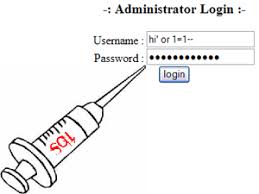- August 10, 2023
- Posted by: team SOUTECH
- Category: Blog, Cyber-security and Ethical Hacking Training, Ethical Hacking and Kali Linux Free Training, Others, Security, Technologies

SQL injection is a type of cyber attack where an attacker manipulates an application’s input to inject malicious SQL statements. This can enable unauthorized access, data manipulation, or even complete control of a database, potentially leading to data breaches or unauthorized actions.
Case Study: A security researcher is engaged to test the security of a web application that utilizes a SQL database. The researcher identifies a login form as a potential injection point and constructs a SQL injection payload using Burp Suite. By injecting the payload, the researcher successfully bypasses authentication and gains unauthorized access to sensitive user information. The researcher documents the attack details and reports the vulnerability to the application’s developers for remediation.
step-by-step instructions:
1. Identify the target: Select a web application that you have permission to test for security vulnerabilities. Ensure that you have proper authorization and informed consent.
2. Understand SQL injection: Familiarize yourself with the concept of SQL injection attacks and how they exploit vulnerabilities in web applications that use SQL databases.
3. Identify potential injection points: Analyze the web application’s input fields, such as login forms, search boxes, or contact forms, to identify potential injection points where user input might be improperly handled.
4. Craft a SQL injection payload:
a. Use tools like Burp Suite (https://portswigger.net/burp) or SQLMap (http://sqlmap.org/) to automate the process or manually construct the payload.
b. Formulate SQL injection payloads that can manipulate database queries or retrieve unauthorized data.
5. Perform the SQL injection attack:
a. Inject the crafted payload into the vulnerable input field.
b. Observe the response from the web application to determine if the attack is successful.
c. Exploit the vulnerability to extract sensitive information or perform unauthorized actions.
6. Document and report findings:
a. Take detailed notes of the steps performed and the results obtained during the SQL injection attack.
b. Capture screenshots or recordings to provide evidence of the vulnerability. c. Prepare a report documenting the attack, including the impact, potential risks, and recommended mitigation measures.





